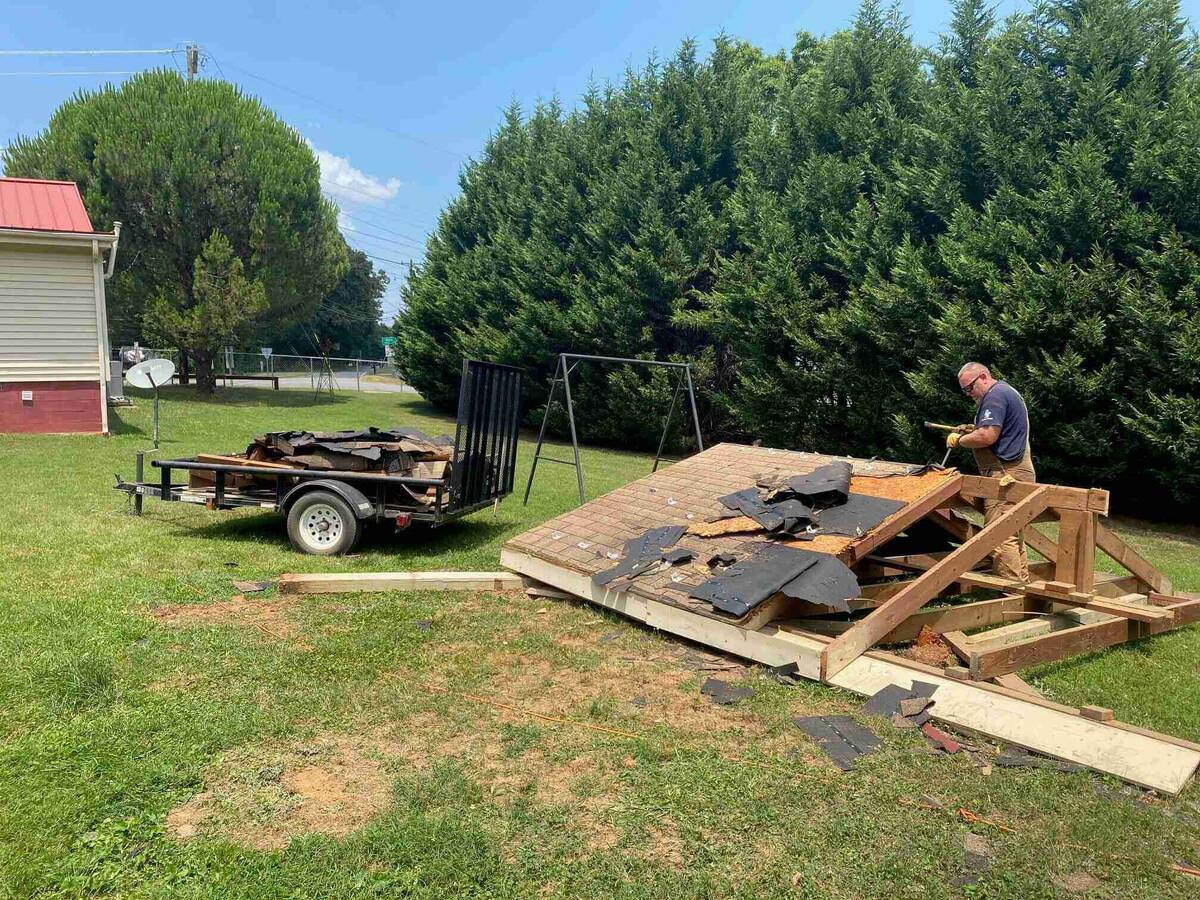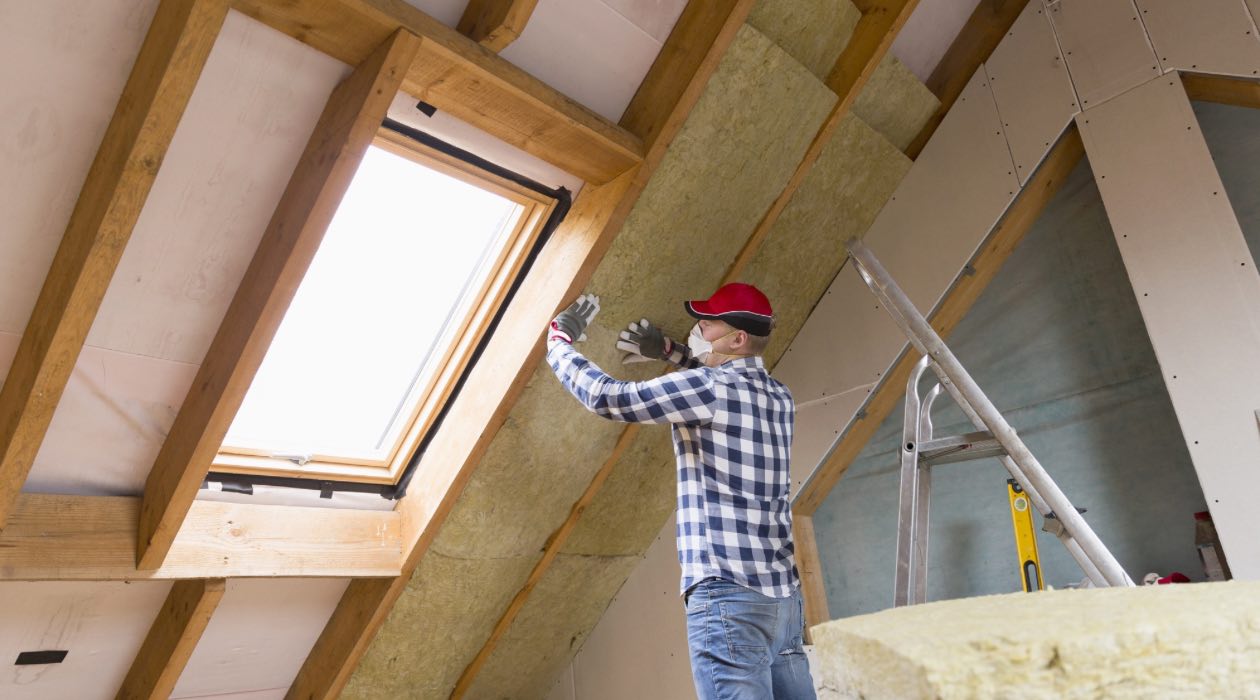

Articles
How To Get Rid Of Furniture
Modified: January 7, 2024
Discover effective methods to easily and efficiently get rid of furniture. From selling to donating, find the best solutions to free up space in your home.
(Many of the links in this article redirect to a specific reviewed product. Your purchase of these products through affiliate links helps to generate commission for Storables.com, at no extra cost. Learn more)
Introduction
When it comes to furniture, there may come a time when you need to say goodbye to a beloved piece. Whether you’re downsizing, redecorating, or simply making way for new furniture, getting rid of old furniture can be a daunting task. However, with the right approach, you can find a new home for your old furniture while also reducing waste and helping others in need.
In this guide, we will explore different methods for getting rid of furniture, including donating, selling, giving away, recycling, and disposing. Each method has its own benefits and considerations, allowing you to choose the option that best suits your needs and values. So, let’s dive in and explore how you can part ways with your furniture in a responsible and sustainable manner.
Key Takeaways:
- Extend the lifespan of your furniture by donating, selling, or giving it away to reduce waste and help others in need. Make a positive impact on someone’s life while finding a new home for your beloved pieces.
- When it’s time to part ways with furniture, consider recycling or proper disposal as last resorts. Prioritize environmentally friendly options to contribute to a sustainable future and minimize waste.
Read more: How To Get Rid Of Fleas In Furniture
Assessing the Need to Get Rid of Furniture
Before embarking on the process of getting rid of furniture, it’s important to assess whether or not it’s truly necessary. Sometimes, a furniture piece might just need a bit of cleaning or refurbishing to bring it back to life. Consider the following factors to determine if you should keep or get rid of your furniture:
- Condition: Assess the condition of the furniture. Is it damaged, broken, or beyond repair? If the furniture is in poor condition and cannot be salvaged, it might be best to get rid of it.
- Functionality: Consider whether the furniture still serves its intended purpose. If it’s no longer functional or practical for your needs, it may be time to let it go.
- Style and Compatibility: Evaluate whether the furniture matches your current decor style and fits well with your overall interior design. If it no longer complements your space, it might be worth getting rid of it to create a cohesive look.
- Sentimental Value: Some furniture pieces hold sentimental value, making it difficult to part ways with them. Consider the emotional attachment you have to the furniture and whether it’s strong enough to justify keeping it.
- Space Constraints: If you’re running out of space in your home, it might be time to declutter and free up some room. Getting rid of furniture can help create a more open and organized living space.
By considering these factors, you can make an informed decision about whether or not to get rid of your furniture. If you decide it’s time to part ways, you can explore the various methods available for finding a new home for your unwanted furniture.
Donating Furniture
Donating furniture is a wonderful way to help others in need while also reducing waste. Instead of letting your unwanted furniture end up in a landfill, consider donating it to local charities, non-profit organizations, or individuals who may benefit from it. Here’s how you can go about donating your furniture:
- Research Donation Centers: Look for local charities or non-profit organizations that accept furniture donations. Check their websites or give them a call to understand their donation process and what items they accept.
- Check Donation Guidelines: Ensure that your furniture meets the donation center’s guidelines. Some places may have specific requirements regarding the condition, size, or type of furniture they accept.
- Prepare the Furniture: Clean the furniture thoroughly before donating. Repair any minor damages, such as loose screws or broken legs, if possible. This will make the furniture more presentable and useful for the recipient.
- Arrange for Pickup or Drop-off: Check if the donation center provides pickup services for furniture donations. If not, make arrangements to transport the furniture to the designated drop-off location. Some centers may have specific hours or appointment-based drop-off options.
- Get a Tax Deduction: Keep track of your furniture donations, as you may be eligible for a tax deduction. Request a receipt from the donation center, which will serve as proof of your contribution.
By donating your furniture, you not only extend the lifespan of the items but also provide assistance to individuals or families in need. Your unwanted furniture could become a valuable and cherished piece in someone else’s home.
Selling Furniture
If your furniture is still in good condition and you’re looking to recoup some of its value, selling it can be a viable option. Here are some steps to follow when selling your furniture:
- Determine the Value: Research the market value of your furniture to determine a fair price. Consider factors such as brand, age, condition, and current demand. Online marketplaces and furniture websites can provide a benchmark for pricing.
- Choose a Selling Platform: Decide where you want to sell your furniture. Options include online marketplaces, local classified ads, social media platforms, or consignment stores. Choose the platform that aligns with your target audience and convenience.
- Create a Compelling Listing: Write a detailed and accurate description of your furniture. Include dimensions, materials, condition, and any unique features. High-quality photos from different angles can attract potential buyers. Highlight the selling points of the furniture to entice buyers.
- Price it Right: Set a competitive and realistic price for your furniture. Consider the condition, age, and original cost of the item. Remember to leave room for negotiation if you’re open to offers.
- Manage Inquiries and Negotiations: Respond promptly to inquiries from potential buyers. Be transparent about the condition and history of the furniture. Negotiate the price if needed, but stay firm on your bottom line.
- Arrange Safe and Convenient Delivery: Agree on a method of delivery or pickup with the buyer. Ensure the process is safe, especially when dealing with strangers. Consider using secure payment methods to protect both parties involved.
- Advertise and Promote: Utilize social media platforms, local groups, or online forums to spread the word about your furniture. Use clear and captivating images, along with a catchy description, to attract potential buyers.
Selling your furniture can help you recoup some of your investment and ensure that it finds a new home where it will be appreciated. It’s a great way to allow your furniture to continue its journey and serve a new purpose in someone else’s life.
Consider donating or selling your unwanted furniture to someone in need. You can also check with local charities or non-profit organizations that may be able to pick up the furniture for free. This way, you can get rid of your furniture while also helping others in your community.
Giving Away Furniture
If you’re looking to part ways with your furniture quickly and without expecting any monetary return, giving it away can be a generous and altruistic option. Here’s how you can go about giving away your furniture:
- Consider Friends and Family: Start by reaching out to your friends, family, and acquaintances to see if anyone is in need of furniture. Someone you know may be looking to furnish their home or know others who are in need.
- Utilize Online Platforms: Online platforms, such as community groups, online classifieds, and social media, can be great resources for finding individuals or families in need of furniture. Post clear images and descriptions of your furniture and specify that it is free.
- Local Charities and Organizations: Research local organizations, shelters, or community centers that accept furniture donations. These organizations often provide furniture to individuals or families in need. Contact them to inquire about their donation process.
- Be Transparent and Honest: When giving away furniture, it’s important to provide accurate descriptions of the items. Be transparent about any wear and tear or potential issues. This will help the recipients make an informed decision about accepting the furniture.
- Arrange for Pickup or Delivery: Coordinate with the recipient to arrange a convenient pickup or delivery time. Ensure clear communication and specify any requirements, such as the need for a truck or assistance in moving the furniture.
Giving away furniture is a wonderful way to help others in need and reduce waste. By directly connecting with individuals or organizations, you can ensure that your furniture goes to someone who will truly benefit from it. It’s a simple act of kindness that can make a significant impact on someone’s life.
Read more: How To Get Rid Of Furniture In Nyc
Recycling Furniture
When furniture is no longer usable or in a condition that cannot be repaired or repurposed, recycling can be a responsible and environmentally friendly option. Recycling furniture helps to reduce waste and conserve resources. Here are some ways to recycle furniture:
- Check with Local Recycling Centers: Contact your local recycling centers or waste management facilities to inquire if they accept furniture for recycling. Some centers have specific policies in place for furniture recycling, while others may direct you to alternative options.
- Explore Furniture Recycling Programs: Look for furniture recycling programs in your area. These programs specialize in dismantling furniture and recycling the various components, such as wood, metal, foam, and fabric.
- Hire a Professional Furniture Recycler: If there are no local recycling programs available, consider hiring a professional furniture recycler. These businesses specialize in the eco-friendly dismantling, disposal, and recycling of unwanted furniture.
- Repurpose or Upcycle: If you’re feeling creatively inclined, you can repurpose your old furniture into something new and useful. Consider transforming a worn-out table into a unique piece of wall art or repurposing old drawers as storage organizers.
- Donate for Upcycling: Look for artists, craftsmen, or DIY enthusiasts who may be interested in repurposing your furniture. Some individuals are skilled at upcycling, using old furniture pieces to create new and imaginative items.
Recycling furniture might not be as straightforward as donating or selling, but it is a sustainable option that minimizes waste and utilizes valuable resources. By exploring furniture recycling options, you can make a positive impact on the environment and contribute to a greener future.
Disposing of Furniture
When furniture is no longer usable, recycling or donation may not be viable options. In such cases, disposing of furniture responsibly is crucial to avoid adding to the landfill. Here are some methods for proper furniture disposal:
- Check Local Bulk Waste Pickup: Research your local waste management or sanitation department to determine if they offer bulk waste pickup services. Some municipalities have specific days or procedures for collecting large items like furniture.
- Hire a Professional Junk Removal Service: If you’re unable to utilize the bulk waste pickup service or have large quantities of furniture to dispose of, consider hiring a professional junk removal service. They will safely and responsibly dispose of your unwanted furniture.
- Find Furniture Disposal Services: Look for companies or organizations that specialize in furniture disposal. These services will ensure that your furniture is disposed of in an eco-friendly manner, following relevant regulations and guidelines.
- Consider Furniture Incineration: In some areas, furniture incineration facilities or waste-to-energy plants may be available. These facilities burn the furniture, converting it to energy. This method can be an alternative to landfill disposal.
- Contact Recycling Centers: Reach out to recycling centers or scrap yards in your area to inquire if they accept furniture for proper disposal. Some centers can dismantle furniture and recycle the different components.
When disposing of furniture, it’s important to be mindful of local regulations, as improper disposal may result in fines. Avoid dumping furniture in unauthorized areas, as this contributes to environmental pollution.
Remember, proper disposal is the last resort when all other options have been exhausted. It’s important to prioritize recycling, donation, or other environmentally friendly alternatives whenever possible.
Conclusion
When the time comes to get rid of furniture, it’s important to choose a method that aligns with your values and helps reduce waste in an environmentally responsible way. Donating, selling, giving away, recycling, or proper disposal are all viable options depending on the condition and usability of the furniture.
Donating furniture allows you to help others in need while extending the lifespan of your furniture. It’s a wonderful way to make a positive impact on someone’s life. Selling furniture allows you to recoup some of its value and find a new home for it where it will be appreciated. Giving away furniture to friends, family, or those in need is a selfless act that can bring joy to others. Recycling furniture is a sustainable choice that reduces waste and conserves resources.
However, it’s crucial to assess the condition and usability of the furniture before deciding on the appropriate method. Some furniture may need cleaning or minor repairs, while others may be beyond salvaging.
Remember to research local resources and organizations that accept furniture donations or handle furniture recycling. They can guide you through the process and ensure that your furniture finds a new home or is properly recycled.
In the end, the goal is to reduce waste and make conscious choices when parting ways with furniture. By choosing responsible methods for furniture disposal, we can all contribute to a more sustainable future and help create a circular economy where resources are reused and wasted is minimized.
Frequently Asked Questions about How To Get Rid Of Furniture
Was this page helpful?
At Storables.com, we guarantee accurate and reliable information. Our content, validated by Expert Board Contributors, is crafted following stringent Editorial Policies. We're committed to providing you with well-researched, expert-backed insights for all your informational needs.















0 thoughts on “How To Get Rid Of Furniture”